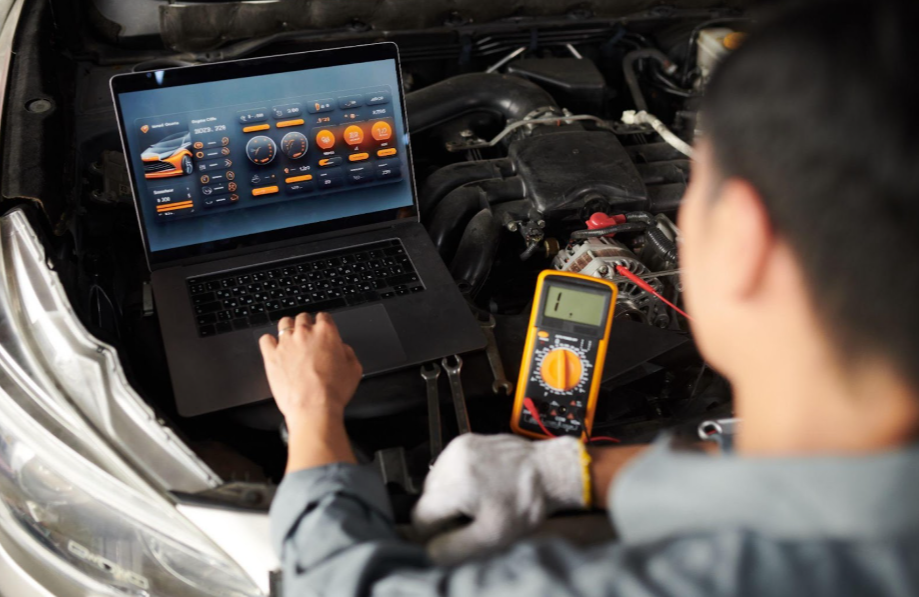
Subaru’s Boxer Engine Legacy and All-Wheel Drive Integration
Subaru’s commitment to horizontally-opposed boxer engine architecture represents one of the most distinctive and enduring engineering philosophies in the automotive industry. For over five decades, this unique configuration has defined Subaru’s character, providing exceptional balance, low center of gravity, and distinctive sound that has captivated enthusiasts worldwide while delivering practical benefits for everyday driving.
The Boxer Engine Philosophy
The horizontally-opposed engine configuration offers fundamental advantages that influenced Subaru’s decision to adopt this architecture in 1966. The opposing pistons create natural balance, reducing vibration compared to conventional inline or V-configuration engines. This inherent smoothness, combined with the engine’s low profile, allows for optimal weight distribution and vehicle packaging.
The boxer configuration places the engine’s mass close to the vehicle’s centerline and low in the chassis, dramatically improving handling characteristics and stability. This low center of gravity provides tangible benefits in cornering ability, vehicle stability, and overall driving dynamics that distinguish Subaru vehicles from their competitors.
Early Subaru boxer engines, including the EA series, established the fundamental design principles that would guide decades of development. These air-cooled powerplants featured simple but robust construction, reliable operation, and distinctive character that appealed to drivers seeking something different from mainstream automotive offerings.
Evolution to Liquid Cooling
The transition to liquid-cooled boxer engines in the 1980s marked a significant advancement in Subaru’s engineering capabilities. The EA82 and subsequent EJ series engines incorporated sophisticated cooling systems, advanced metallurgy, and precision manufacturing that enhanced both performance and reliability while maintaining the distinctive characteristics of the boxer configuration.
The EJ series engines introduced multi-valve cylinder heads, sophisticated fuel injection systems, and advanced engine management that optimized performance across diverse applications. From economy-focused naturally aspirated variants to high-performance turbocharged versions, the EJ family demonstrated the flexibility of the boxer architecture.
The development of the EJ20 and EJ25 engines showcased Subaru’s ability to create sophisticated powerplants that combined everyday usability with exceptional performance potential. These engines featured robust construction, advanced combustion chamber designs, and sophisticated valve train systems that provided excellent durability and modification potential.
Turbocharging Excellence
Subaru’s integration of turbocharging technology with boxer engines created some of the most celebrated performance powerplants in automotive history. The EJ20T and EJ25T engines demonstrated that forced induction could be successfully adapted to the boxer configuration, creating powerplants with exceptional power-to-weight ratios and distinctive character.
The development of the EJ257 engine for the WRX STI represented the pinnacle of EJ series performance engineering. This sophisticated powerplant featured forged internals, advanced turbocharging systems, and precision-balanced rotating assemblies that could reliably produce substantial power while maintaining the durability expected from Subaru engines.
The integration of advanced intercooling systems, sophisticated boost control, and precise engine management allowed these turbocharged boxer engines to achieve impressive power output while maintaining broad torque curves that enhanced drivability across diverse conditions.
All-Wheel Drive System Integration
Subaru’s commitment to standard all-wheel drive across most of their lineup required sophisticated transmission systems capable of seamlessly distributing power to all four wheels. The company developed various all-wheel drive configurations, from simple mechanical systems to sophisticated electronically-controlled units with variable torque distribution.
The integration of boxer engines with all-wheel drive systems creates optimal weight distribution and traction characteristics that enhance vehicle stability and capability in adverse conditions. The low center of gravity provided by the boxer engine configuration complements the traction advantages of all-wheel drive to create exceptionally capable vehicles.
Modern Subaru transmissions incorporate advanced technologies like vehicle dynamics control, which can selectively apply braking to individual wheels and adjust power distribution to maintain optimal traction and stability. These systems work seamlessly with boxer engines to provide enhanced safety and performance.
Manual Transmission Excellence
Subaru’s manual transmissions demonstrate the company’s commitment to driving engagement and durability. The development of five and six-speed manual units specifically designed for boxer engine applications required careful attention to gear ratios, synchronizer design, and shifting characteristics that complement the engine’s power delivery characteristics.
The STI’s six-speed manual transmission represents sophisticated engineering with close-ratio gearing, robust construction, and precise shifting that enhances the driving experience. These transmissions feature advanced synchronizers, sophisticated gear tooth designs, and careful attention to oil circulation that ensures reliable operation under demanding conditions.
The integration of advanced differential systems, including limited-slip and electronically-controlled units, provides additional traction and handling benefits that complement the inherent advantages of the boxer engine configuration.
FA Series Modern Innovation
The introduction of the FA series engines marked Subaru’s evolution toward modern direct injection technology while maintaining the distinctive characteristics of the boxer configuration. The FA20 engine incorporated advanced features like direct injection, sophisticated turbocharging, and advanced engine management that enhanced both performance and efficiency.
These modern boxer engines demonstrate Subaru’s ability to integrate contemporary technologies while preserving the unique character that defines their powerplants. Advanced fuel injection strategies, precise turbocharger matching, and sophisticated thermal management ensure optimal performance across diverse operating conditions.
The FA24 engine further advanced Subaru’s boxer engine technology, incorporating larger displacement and advanced engineering that provides enhanced performance while maintaining the reliability and character expected from Subaru powerplants.
Performance Applications and Racing Heritage
Subaru’s success in motorsports, particularly in rally racing, has influenced their production engine and transmission development. The extreme conditions of rally competition provided valuable testing grounds for advanced technologies that eventually found their way into production vehicles.
The development of competition-specific boxer engines showcased the architecture’s potential for high-performance applications. These race-proven technologies, including advanced materials, sophisticated cooling systems, and precision-balanced components, influenced production engine development and demonstrated the fundamental strength of the boxer configuration.
Manufacturing Precision and Quality
Subaru’s manufacturing processes emphasize precision assembly and quality control that ensures consistent performance across production. The complexity of boxer engine assembly requires sophisticated tooling and precise procedures that verify proper alignment and balance of all components.
Advanced machining techniques ensure that cylinder bore alignment, crankshaft precision, and head gasket sealing meet exacting specifications. The attention to manufacturing detail contributes to the exceptional longevity and reliability of Subaru boxer engines.
See Also: Organizing Research with AI: How Technology Helps Students Handle Large Data Sets
Aftermarket Support and Modification Potential
The distinctive characteristics of Subaru boxer engines have created a passionate enthusiast community that supports extensive aftermarket development. From mild performance modifications to complete engine builds, the robust construction of Subaru powerplants provides excellent foundations for enhancement.
Enthusiasts seeking authentic Subaru transmission components can find affordable JDM Subaru transmissions that provide access to gear ratios and configurations that enhance performance potential. These genuine components maintain the precision engineering that defines Subaru drivetrains.
The continued development of performance parts and tuning solutions ensures that Subaru enthusiasts can explore the full potential of these unique powerplants while maintaining the reliability and character that make boxer engines special.




